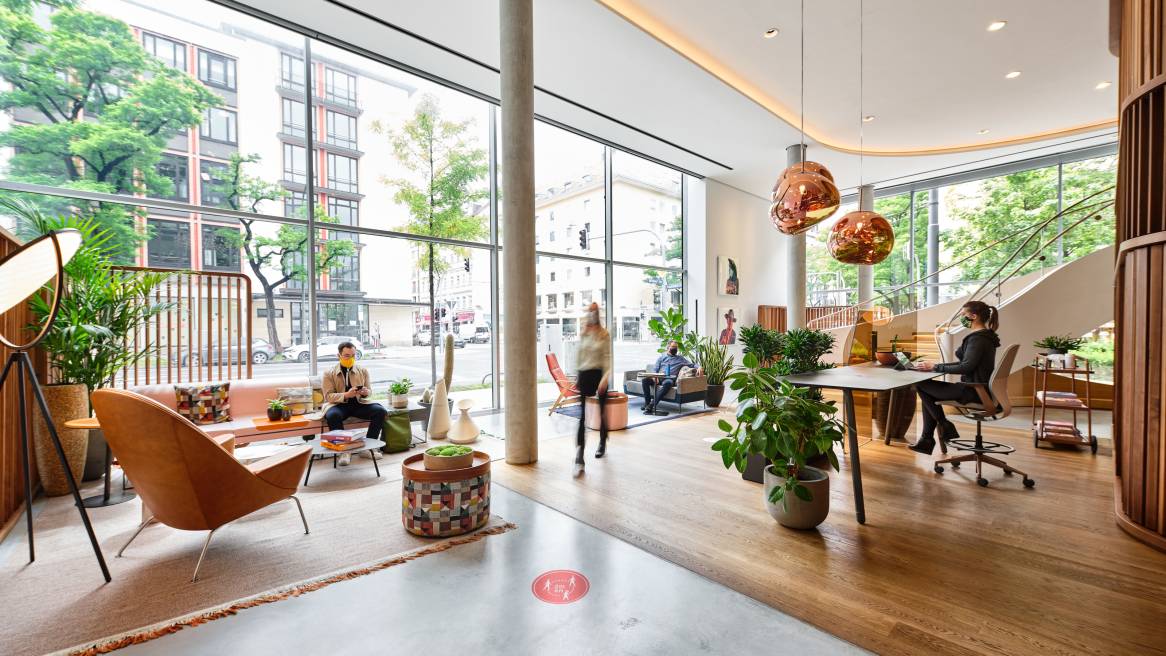Welcome Back
How we adapted our Learning and Innovation Center to create a safe return for our employees
As the COVID-19 crisis begins to ease, and organizations plan to bring employees back to the office, a flood of questions arises.
While the answers to these questions are different for each company and culture, a cross-functional, agile team at the Steelcase Learning and Innovation Center (LINC) in Munich led the return to work with a human-centered approach that combined the latest information from global health experts, company-wide surveys and employee round tables.
Prepared with statistics and a pulse on employee sentiment, Steelcase developed design principles, protocols and new products that enabled a warm and safe welcome back to the workplace.
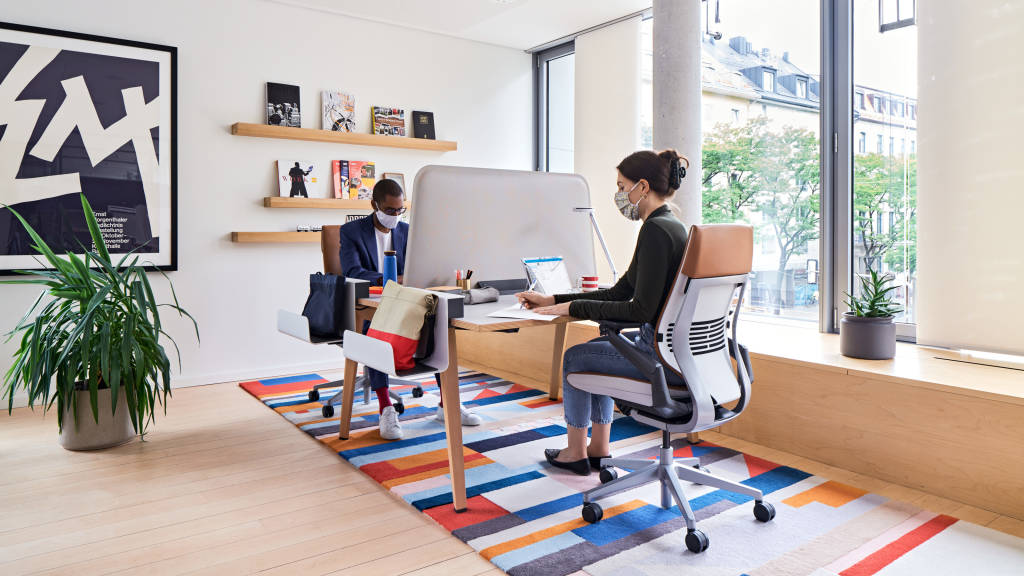
Division
Steelcase identified three key design considerations to guide the adaptation of the office — division, density and geometry. To respond to market demands for solutions that support post-COVID guidelines, design, engineering and marketing teams worked in sprints to rapidly prototype and launch Steelcase Shielding Solutions, a collection of screens designed to retrofit or reconfigure existing spaces.
These screens were added to the open-plan leadership space, allowing colleagues to work together without direct, face-to-face interaction.
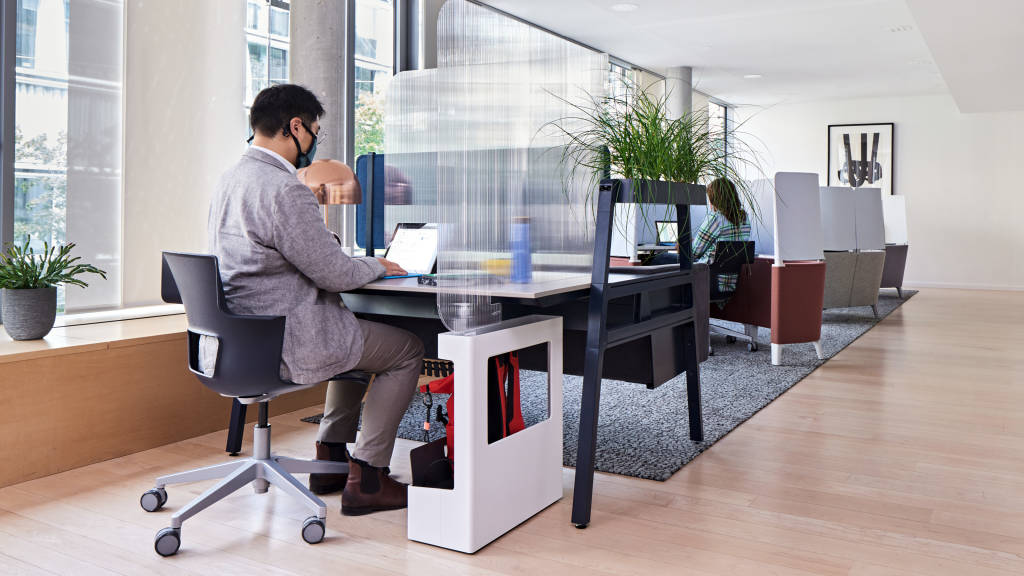
The Steelcase Shielding Solutions are a low-cost, quick way to transform the work settings into safer spaces with proper division, where people can focus or catch up with colleagues passing by.
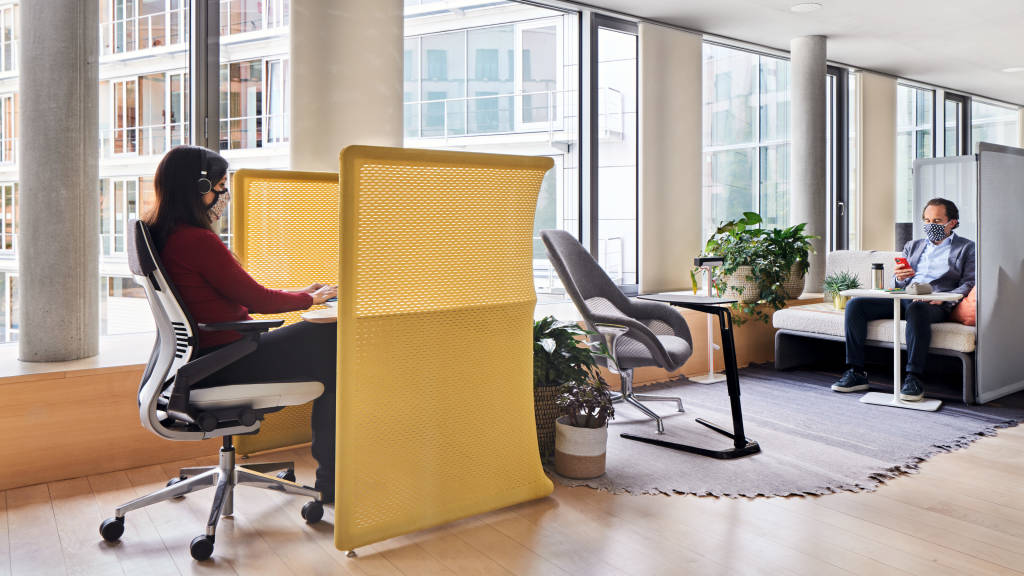
Density
An audit of all spaces was done to identify changes required to meet social distancing guidelines. To create the necessary six foot/two-meter distance and decrease density, furniture was pulled further apart where possible or removed completely, like chairs at this team bench setting.
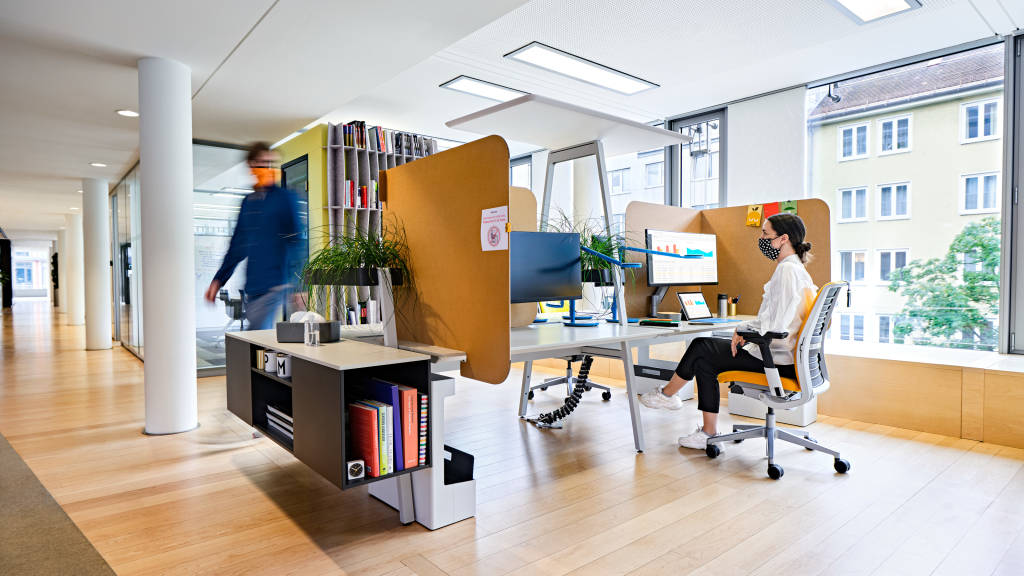
Geometry
Shared spaces offer the greatest ability in the future to flex as our needs toggle between creating greater distance and coming closer together. Furniture in shared spaces is often freestanding and can easily be moved apart to accommodate distancing, rearranged to change geometry, or act as a shield to create division.
To reduce face-to-face interactions, Steelcase re-oriented workstations to 90-degree angles. Height-adjustable desks and freestanding screens add extra protection by preventing face-to-face interactions between people seated directly across or nearby one another.
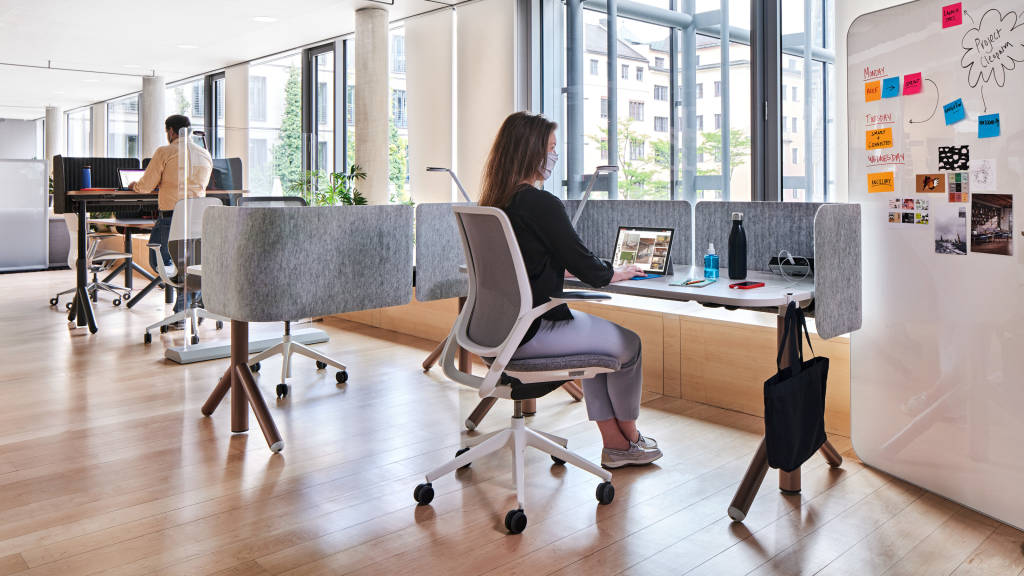
Supporting Social Connections Safely
The WorkCafé is the heart of the LINC. It’s a place where people from across the company come to catch up and collaborate. The results of the employee survey were clear: Social interaction with colleagues was the number one reason that people want to return to the office.
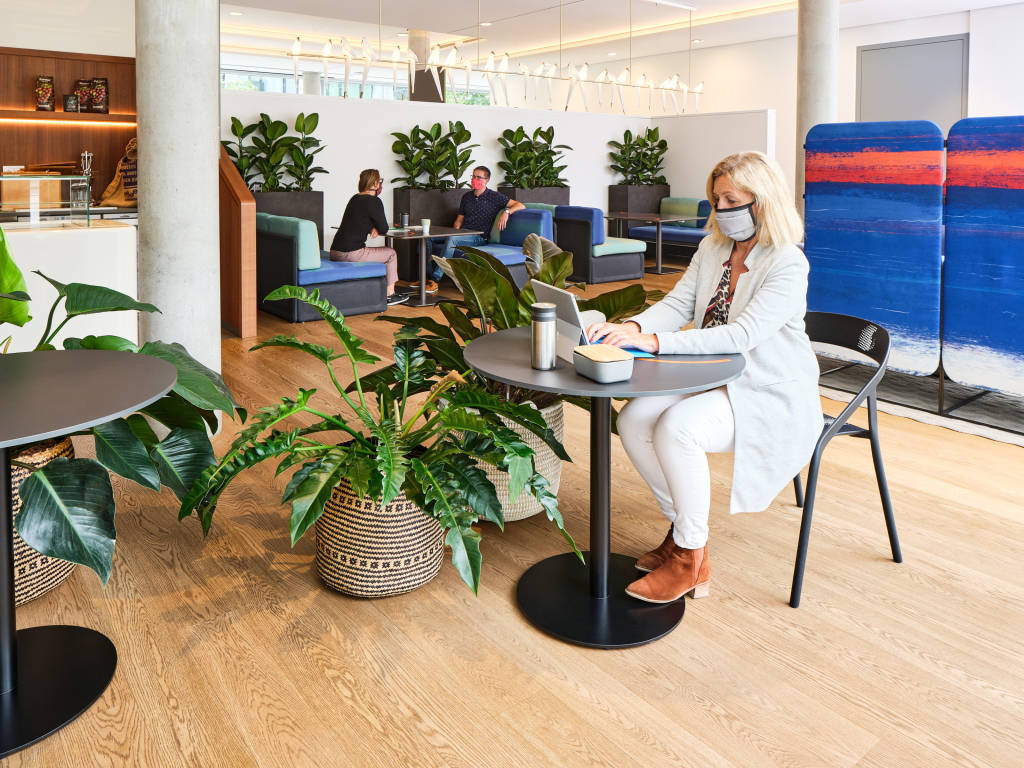
Enabling Collaboration
Spaces that bring people together in more residentially inspired, comfortable settings foster productivity and performance. To support physical distancing protocols, elements like Steelcase Flex Freestanding Screens were placed in shared spaces to add privacy that is critical to making these spaces productive. The screens support acoustical, visual, informational and territorial privacy – all of which contribute to creating a sense of psychological comfort and security – helping people feel at ease, free to share ideas and make work visible.
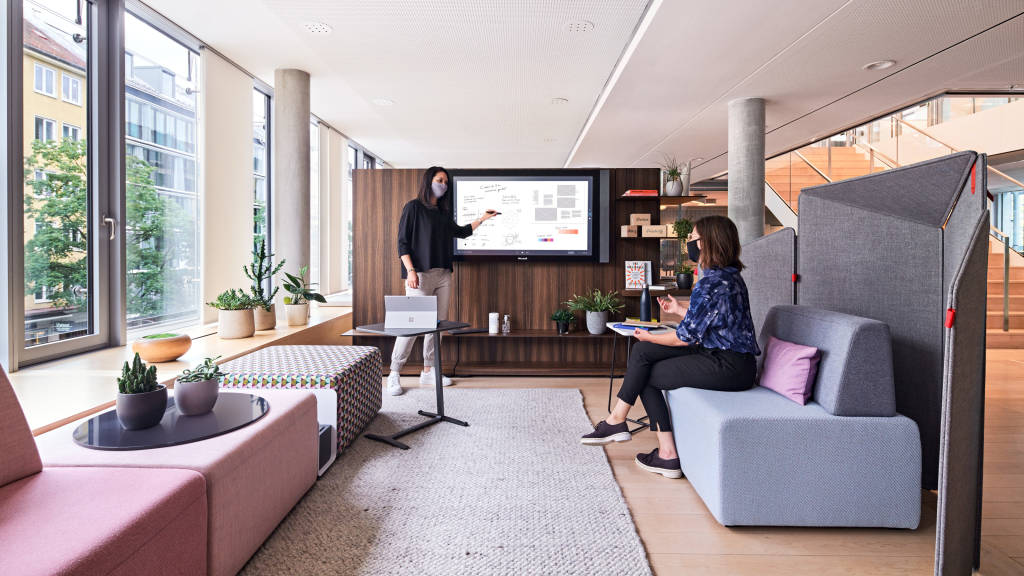
Smart + Connected Technology
Steelcase also incorporated video technology wherever possible to keep teams connected when they can’t be in the same space. Scheduling systems allow people to book rooms for extended periods of time and occupancy signage in each setting lets workers know how many people can safely be in one space at a time.
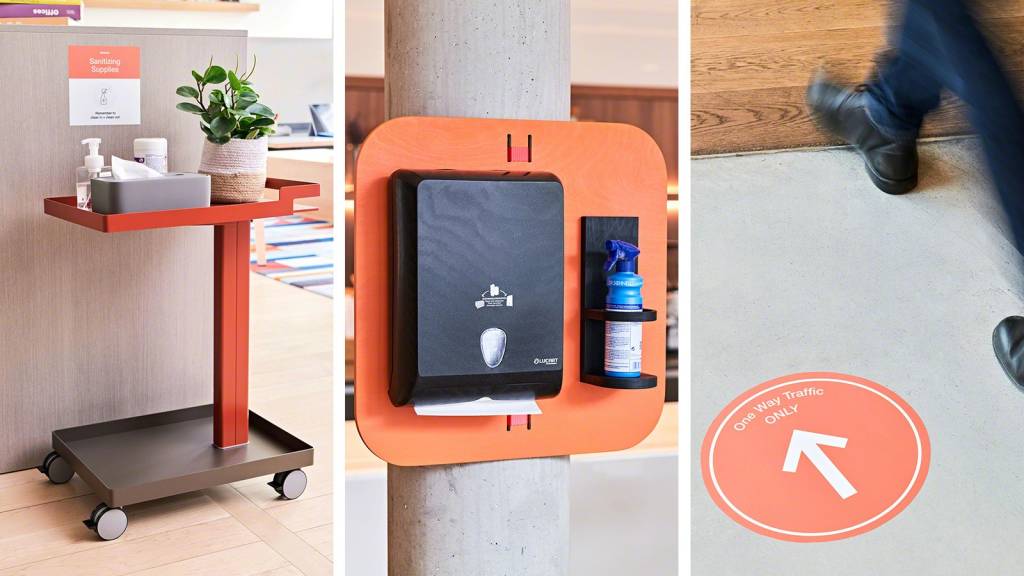
Signage + Sanitation
To continuously signal that a distance of six foot/two-meters must be maintained, visual cues on walls and floors remind people to stay at a distance as well as indicate recommended traffic patterns in busy corridors to avoid face-to-face contact.
Sanitation stations have been placed throughout the LINC to keep the office as clean and safe as possible. The company is also accelerating its investment to replace devices with touchless experiences (i.e. faucets, soap dispensers, bottle filling stations, etc.) and making changes to the HVAC systems as needed to improve ventilation.
The changes made in the LINC demonstrate how to effectively balance the requirement for safety and hygiene without compromising design or performance. Our employees are coming back – confident in the changes made and energized to be working with colleagues again in person.
“During this ongoing global crisis, the situation is evolving daily and we try to respond quickly as we learn, in the moment. We don’t have all the answers,” says Sara Armbruster, the executive leading Steelcase’s return to work strategy. “But like most organizations, we’re on a journey — and we’re learning every day to make the best possible choices for our people and our company in a time of uncertainty.”
If you’d like to know more about our approach, please see our guide, Navigating What’s Next: The Post-COVID Workplace, which offers strategies for retrofitting, reconfiguring and reinventing the workplace to create offices that are as safe as possible.

